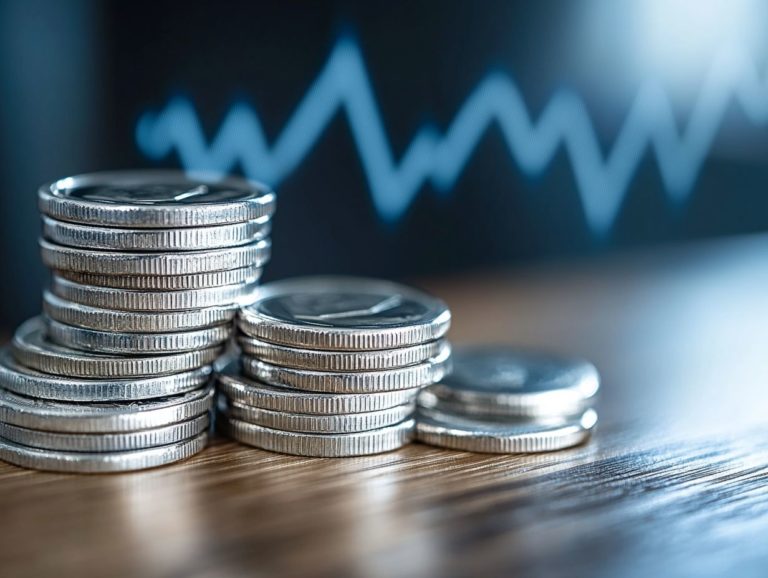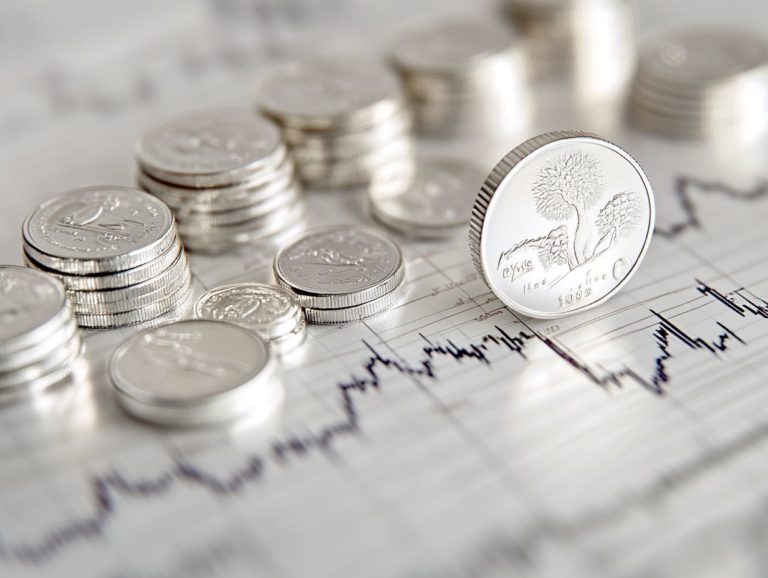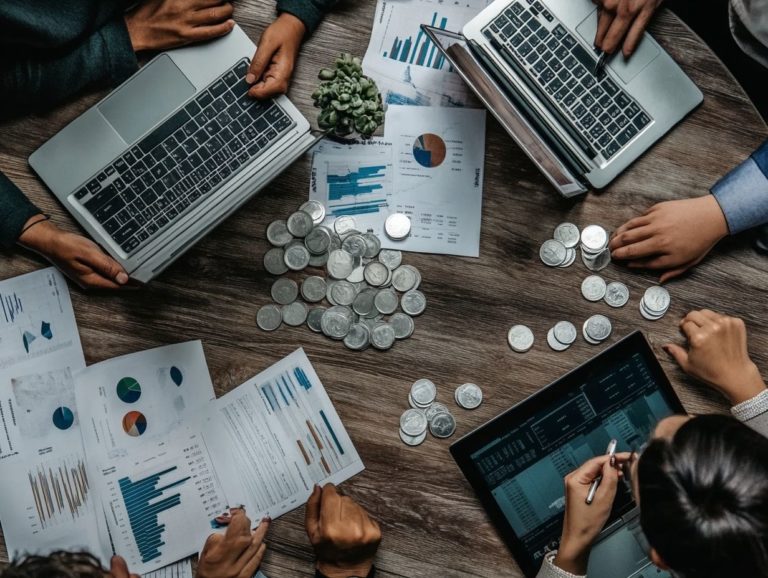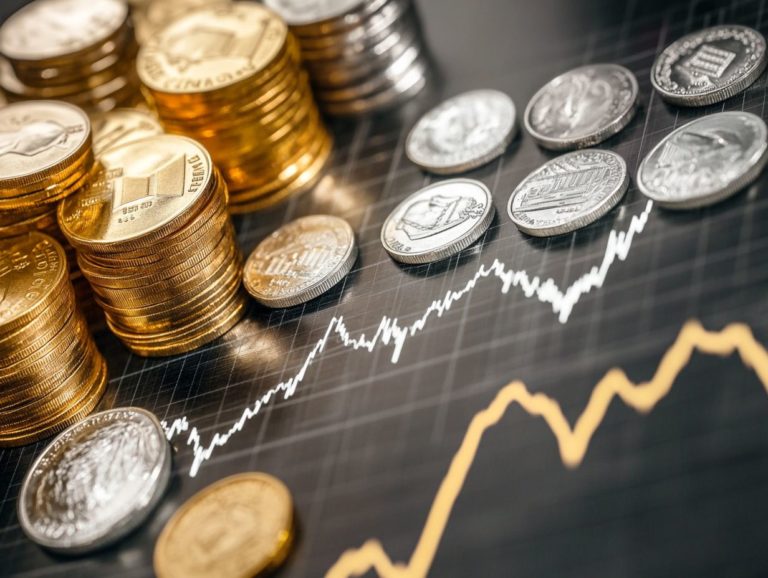The Best Time to Buy Silver: A Seasonal Guide
Navigating the silver market is an exhilarating yet challenging adventure for investors like yourself! With prices constantly in flux due to many influences, grasping the underlying dynamics is essential.
This article delves into the key elements that impact silver prices, including seasonal trends and historical patterns. You ll uncover the optimal times to make your purchases, explore effective strategies to maximize profits, and identify potential risks to keep in mind.
Contents
Key Takeaways:

- The best time to buy silver is during the summer months when demand is typically low and prices are more affordable.
- Historical patterns show that silver prices tend to rise in the fall and winter months, making it a good time to sell and profit.
- Investing in silver requires careful consideration of potential risks and implementing strategies to mitigate them.
Understanding the Silver Market
The silver market is a dynamic space in the world of precious metals. It attracts various investors looking to seize unique opportunities presented by its distinct market trends and price fluctuations.
To truly grasp the complexities of the silver market, one must delve into an array of influencing factors, including economic instability, the performance of the US dollar, and insights from industry experts like Adrian Ash of BullionVault.
As demand for silver escalates especially during festive seasons it becomes imperative for you to familiarize yourself with the foundational elements that propel its price movements.
Factors Affecting Silver Prices
Several factors play a crucial role in determining silver prices. You ll want to consider everything from market trends to the global demand for precious metals.
The dynamics of supply and demand illustrate how fluctuations in production levels or shifts in consumer appetite can significantly sway prices. Economic indicators, such as inflation rates and currency strength, serve as vital barometers that help you gauge the overall health of the market.
Moreover, investor sentiment profoundly impacts pricing; when confidence wanes, demand for silver often spikes as it becomes a sought-after safe-haven asset a term used to describe investments that retain value during market turbulence.
Seasonal influences also create market fluctuations, as certain times of the year see increased industrial consumption or jewelry production, further contributing to the price movements you observe.
The Seasonal Trends of Silver Prices
Understanding seasonal trends in silver prices is vital for investors. These trends affect market dynamics throughout the year.
Historical data reveals that the silver market follows distinct seasonal patterns, with December often seeing notable price movements driven by heightened demand ahead of the Indian wedding season. January returns frequently set the stage for the year ahead.
By recognizing these trends, you can make informed decisions that align seamlessly with your investment objectives.
Historical Patterns and Analysis
A thorough analysis of historical patterns is essential for you as an investor in the silver market; it unveils valuable insights into past price movements and future potential.
Understanding the cyclical nature of silver prices can illuminate periods of heightened demand, often sparked by economic uncertainty or a shift toward green technology. Consider key past events like the 2008 financial crisis; silver saw dramatic price surges during this period. If you’re looking to diversify your investments, exploring the best places to buy physical gold could be beneficial. These trends indicate that current market conditions could display similar volatility, influenced by geopolitical tensions and inflationary pressures.
For those of you contemplating an investment, keeping an eye on macroeconomic indicators and monitoring historical resistance levels can provide strategic entry points. To enhance your investment strategy, consider looking into the best times to invest in precious metals. Ultimately, a well-rounded market analysis enables you to make informed decisions about your silver acquisitions.
Best Time to Buy Silver

Finding the best time to buy silver is crucial for your investment strategy. Whether you’re a seasoned investor or new to the game, timing affects your returns.
Analyze price trends and market conditions to identify favorable entry points. This approach enriches your portfolio and helps you seize opportunities.
Recommendations for Buying Silver
Follow informed recommendations that align with current market trends and your investment goals. Stay aware of market fluctuations to enhance your chances of timely purchases.
Evaluate different silver investment options such as bullion, Exchange-Traded Funds (ETFs), or mining stocks. Choose what aligns best with your risk tolerance and financial aspirations.
Establish a strategy for buying during dips. Keeping an eye on historical price trends will clarify the best timing for purchases.
Tips for Investing in Silver
Investing in silver can be rewarding with well-crafted strategies. Silver serves as a hedge against economic uncertainty and can help you capitalize on market fluctuations.
By applying effective tips, you can navigate the silver market and position yourself for success.
Strategies for Maximizing Profits
To maximize profits, blend market analysis with disciplined trading techniques. Understanding trends can significantly enhance your returns.
Diversify your portfolio with various silver forms such as bullion coins or mining stocks. Keep an eye on macroeconomic indicators to time your market entries and exits.
Employ strategies like dollar-cost averaging to mitigate risks from price volatility. Balancing these methods boosts your confidence and efficiency in the silver market.
Risks and Considerations
Investing in silver carries risks you should understand. Economic instability and shifts in demand can impact silver prices.
Grasp these risks to craft a solid investment strategy that aligns with your financial goals.
Potential Risks and How to Mitigate Them

Silver investments carry potential risks, but you can use strategies to safeguard against losses. Market volatility and geopolitical tensions can affect prices.
Focus on diversifying your portfolio to avoid over-reliance on a single asset. Engage with reputable reports and expert analyses for critical insights.
By employing these practical approaches, you can minimize risks and enhance your potential for long-term gains.
Alternative Investments to Silver
Exploring alternative investments to silver is crucial for you as an investor aiming to diversify your portfolio beyond precious metals. Various options may present unique benefits and returns that can enhance your financial landscape.
While silver holds its allure, understanding other investment avenues enables you to navigate market conditions with greater agility. Considering these alternatives allows you to cultivate a balanced and resilient investment strategy that stands the test of time.
Comparing Different Investment Options
Comparing various investment options, including silver and other precious metals, is essential for informed decisions about your portfolio allocation.
Understanding the nuances between different assets helps you navigate market trends more precisely. Silver often attracts attention for its affordability and industrial applications. In contrast, gold serves as a safe haven during economic downturns.
Platinum, though rarer, may exhibit higher volatility, affecting its desirability. Each metal presents unique advantages and disadvantages, influenced by factors like market demand, political situations around the world, and overall economic conditions.
Critically analyzing these elements helps you align your investments more effectively with your financial goals and risk tolerance.
Frequently Asked Questions
When is the best time to buy silver?
The best time to buy silver is typically during the fall and winter months, as demand for silver tends to decrease during this time, causing prices to drop.
Why is fall and winter the best time to buy silver?
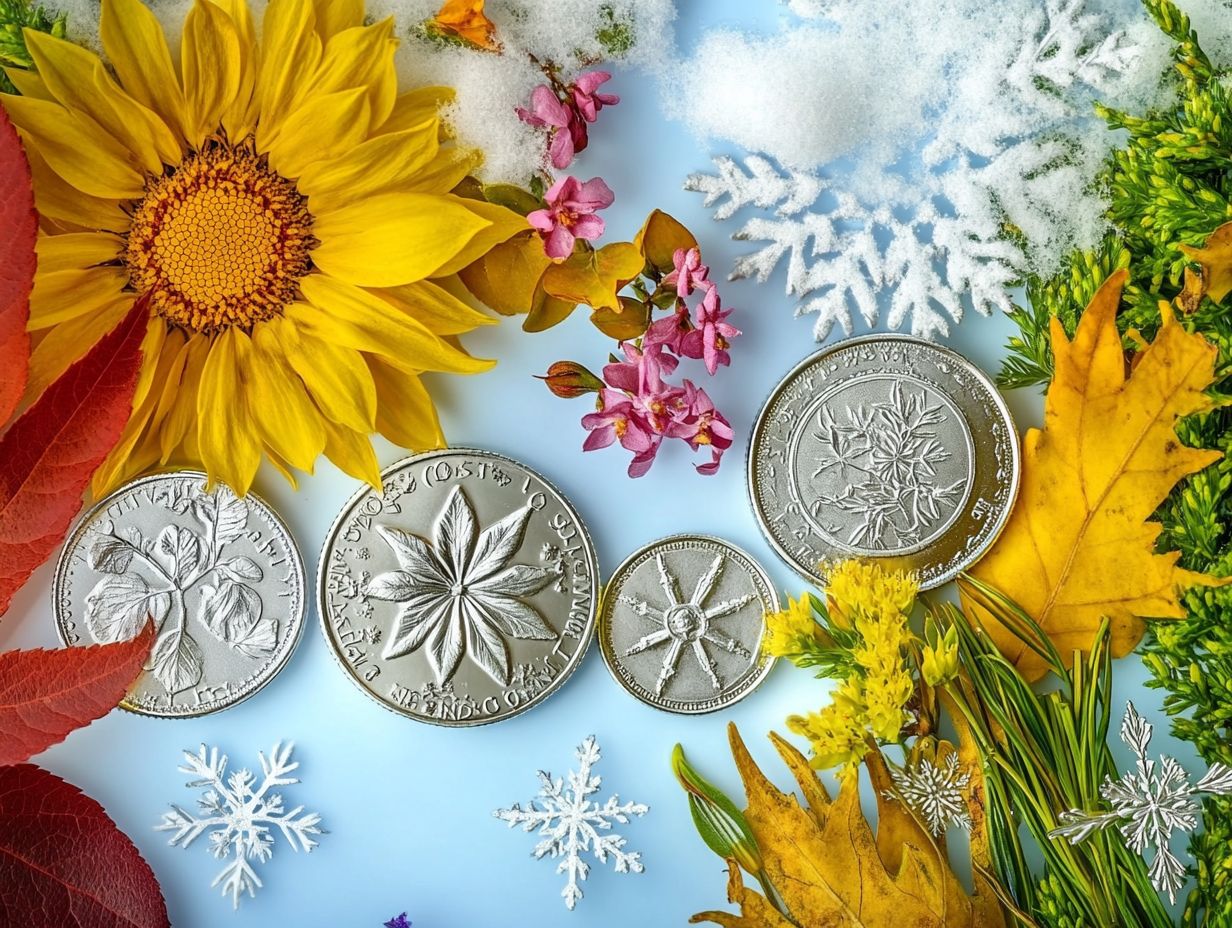
During the fall and winter, there is typically less demand for silver due to decreased jewelry sales and reduced industrial use. This decrease in demand can lead to lower prices, making it an ideal time to purchase.
Is there a specific month that is best for buying silver?
While no specific month is universally considered the best time to buy silver, many experts suggest monitoring prices during October and November, as they tend to be lower during these months.
Are there any yearly trends for silver prices?
Yes, there are often yearly trends for silver prices due to the cyclical nature of buyer demand. For example, prices tend to be higher at the beginning of the year as investors make purchases for the upcoming Chinese New Year.
What other factors should I consider when buying silver?
In addition to seasonal trends, consider the current state of the economy, global political events, and major market fluctuations. All these factors can impact silver prices and should be accounted for before making a purchase.
Is it possible to time the market when buying silver?
Timing the market is always a risk, and no one can predict when the best time to buy silver will be. Make sure to do your research, monitor market trends, and make informed decisions rather than trying to time the market.










